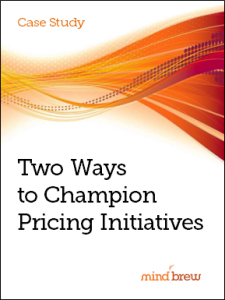During World War II, the United States was developing and testing its first jet aircraft. Because information about this cutting-edge program could have been incredibly valuable to the country’s enemies, the military went to great lengths to keep it secret.
Those lengths included a gorilla mask.
The senior test pilot on the project was Jack Woolams, a well-known practical joker. When they discussed ways to keep word from getting out, Wollams had a novel suggestion: he should wear a gorilla mask and a derby hat and smoke a cigar while up in the air.
While the idea seems outlandish, it actually made some sense. Pilots often encountered each other in the air and could look into each other’s cockpits. If another pilot reported seeing a strange, super-fast aircraft piloted by a gorilla, who would believe them? They were more likely to get sent off for a psych evaluation than to have their story repeated in credible channels.
You might be hoping that the next section of this blog will explain how wearing a gorilla mask can help you improve your pricing.
Sadly, it does not.
In fact, while you do want to keep your pricing strategy secret from customers and competitors, we’re not even going to suggest that you engage in deception or practical jokes. We are going to suggest, however, that this story is a good example of the importance of considering other people’s reactions when crafting your strategy.
To be successful in B2B pricing, you need to understand how your customers will respond to different pricing strategies. For that, you need to understand two fundamental concepts: segmentation and price elasticity.
Segmentation involves organizing your customers into distinct groups based on their willingness to pay. Factors like size, industry, geographic location, and purchasing behavior can affect the price that will be acceptable to different customers. By teasing out which factors are important and adjusting your prices for each group, you can maximize the price that you are able to charge each customer.
Elasticity is a measure of how sensitive customers are to a change in price. It predicts the effect that an increase or decrease in the price will have on sales and margins.
By combining these two concepts, you can develop a pricing strategy that offers the right price to the right customer at the right time.
The lesson from the gorilla flying a jet aircraft anecdote is that understanding how others are likely to react can be the key to achieving your desired results. In the world of pricing, this means investing time and effort into understanding your customers and their needs, and then tailoring your pricing strategy to maximize both customer satisfaction and your own profitability.
If you’d like to learn more about how to put these concepts into practice, we recommend a pair of webinars: The Fundamentals of Price Segmentation and Business-to-Business Price Elasticity. They’ll get you started with the basics and point you to related resources that can help you understand your customers even better.
And now, if you’ll excuse me, I’m off to study how wearing a gorilla mask while driving affects the behavior of nearby cars.















